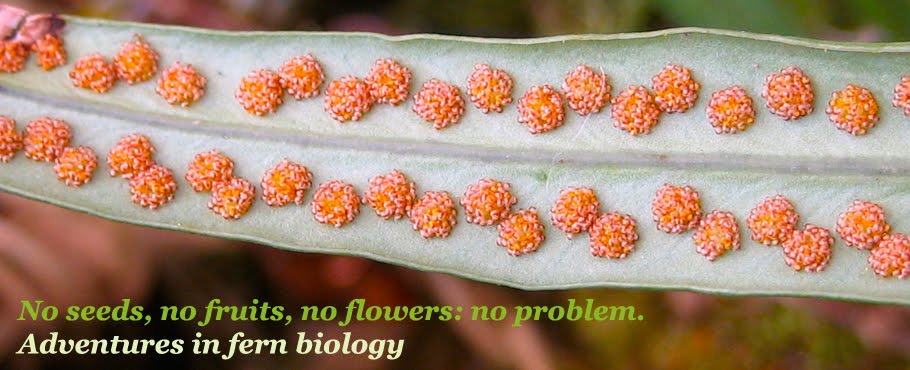The last field trip I took while in Ithaca was to Robert Treman State Park. This is a beautiful place with many miles of trails connecting the Upper entrance, descending past waterfalls and through gorges, to the lower entrance several miles away. We started at the upper entrance and hiked down past Lucifer Falls, in search of a grove of Dryopteris goldiana that was known to occur near the base of this waterfall. We found it growing happily in a lush carpet of Vinca:
Farther along, we also came across some Asplenium trichomanes growing on a little shelf in the rock wall, and near the end of the trail, back at the upper parking lot, we spotted a patch of Cryptogramma stelleri, which I hadn't seen in the wild before. Two photos of each are below. All in all, a great trip to upstate New York!





















